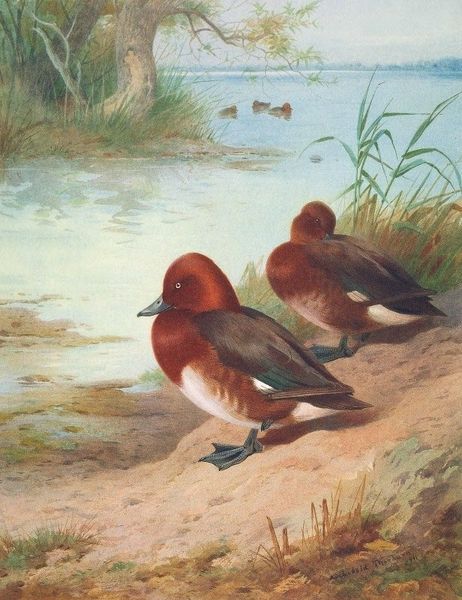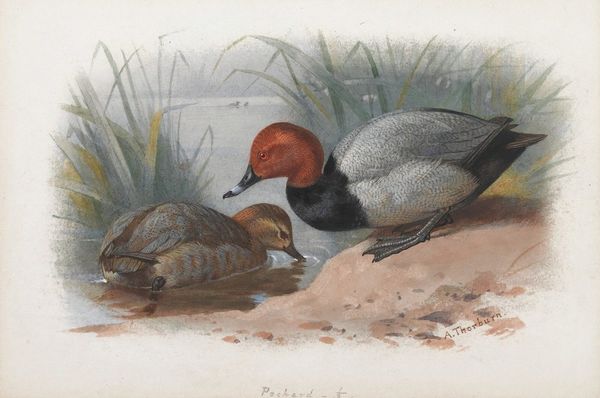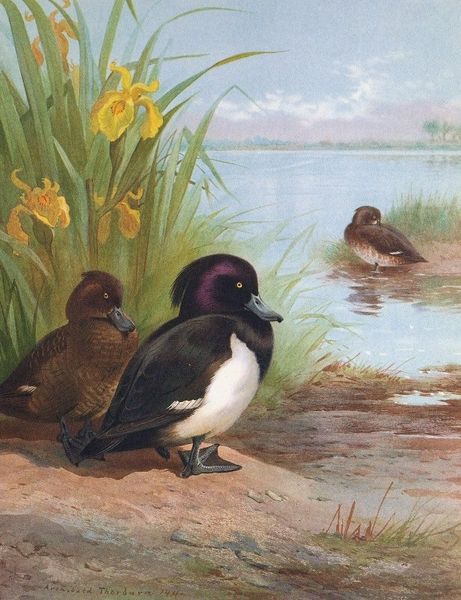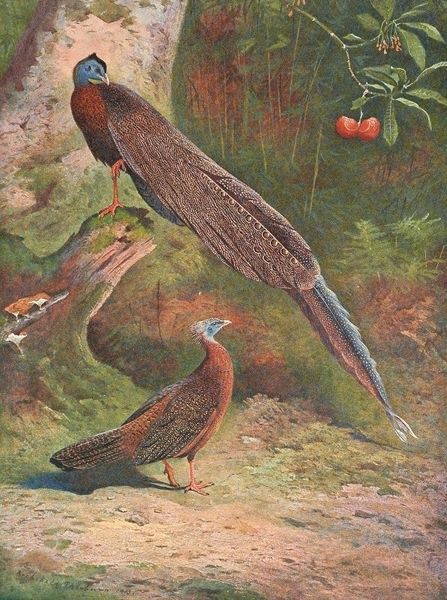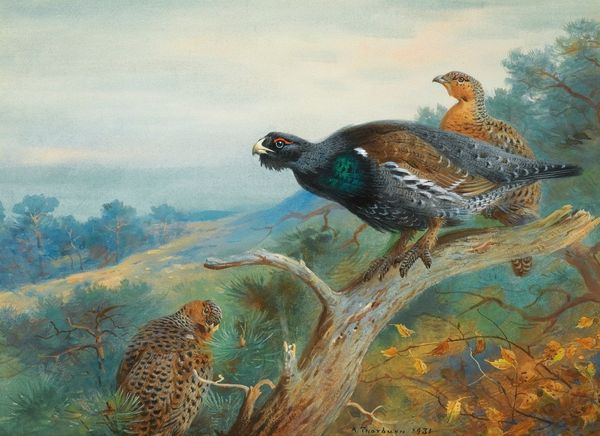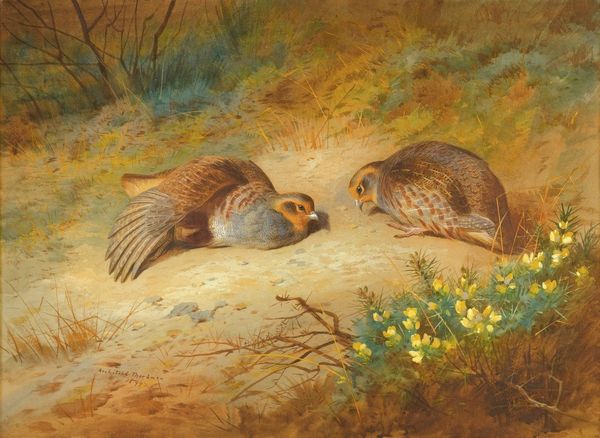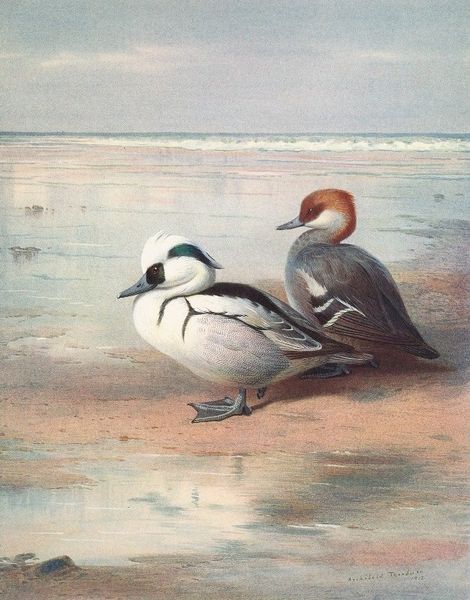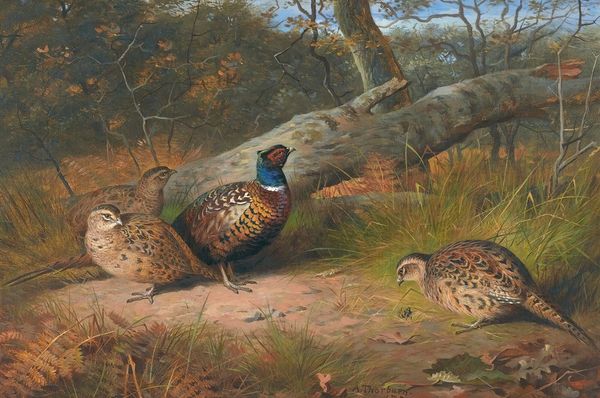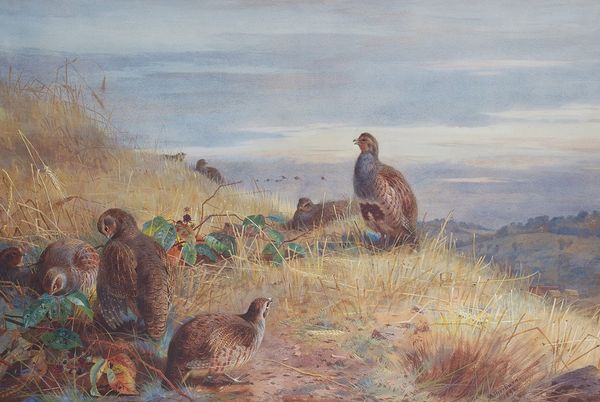
painting, watercolor
#
portrait
#
animal
#
painting
#
arts-&-crafts-movement
#
landscape
#
oil painting
#
watercolor
#
animal portrait
#
watercolor
Copyright: Public Domain: Artvee
Editor: Here we have Archibald Thorburn’s watercolor painting *Common Pochard* from 1913. It's a sweet scene, rather muted in tone, and I’m struck by how meticulously Thorburn renders the textures of the ducks' feathers. What do you see in this piece from a formal perspective? Curator: The piece offers a delicate balance between meticulous detail and softer, less defined areas. Observe how Thorburn orchestrates the interplay of light and shadow to give form to the birds and their environment. The background reeds, rendered with a certain looseness, serve to push the crisp detail of the Pochards to the forefront. How do you read the subtle contrast in color temperature? Editor: I notice the cooler tones in the water versus the warmer browns and yellows in the foliage, creating a sort of depth. It seems carefully calculated. Does the placement of the birds also play into this balance? Curator: Precisely. The positioning of the birds directs the viewer’s gaze—the contrasting stances and plumage encourage a visual dance around the composition. The negative space around the birds, achieved through variations in the density and direction of the brushstrokes, adds a quiet tension. Notice also how the composition guides our perception. It compels us to engage not merely with a representation of ducks, but a carefully structured arrangement of forms and colors. Editor: That’s fascinating. I hadn’t considered how much the composition contributes to the overall effect beyond just depicting the subject matter. I will never look at this piece in the same way! Curator: Indeed, by understanding the fundamental structure, we come to perceive not only *what* is depicted, but *how* it is presented. A worthy exercise in seeing, indeed.
Comments
No comments
Be the first to comment and join the conversation on the ultimate creative platform.
